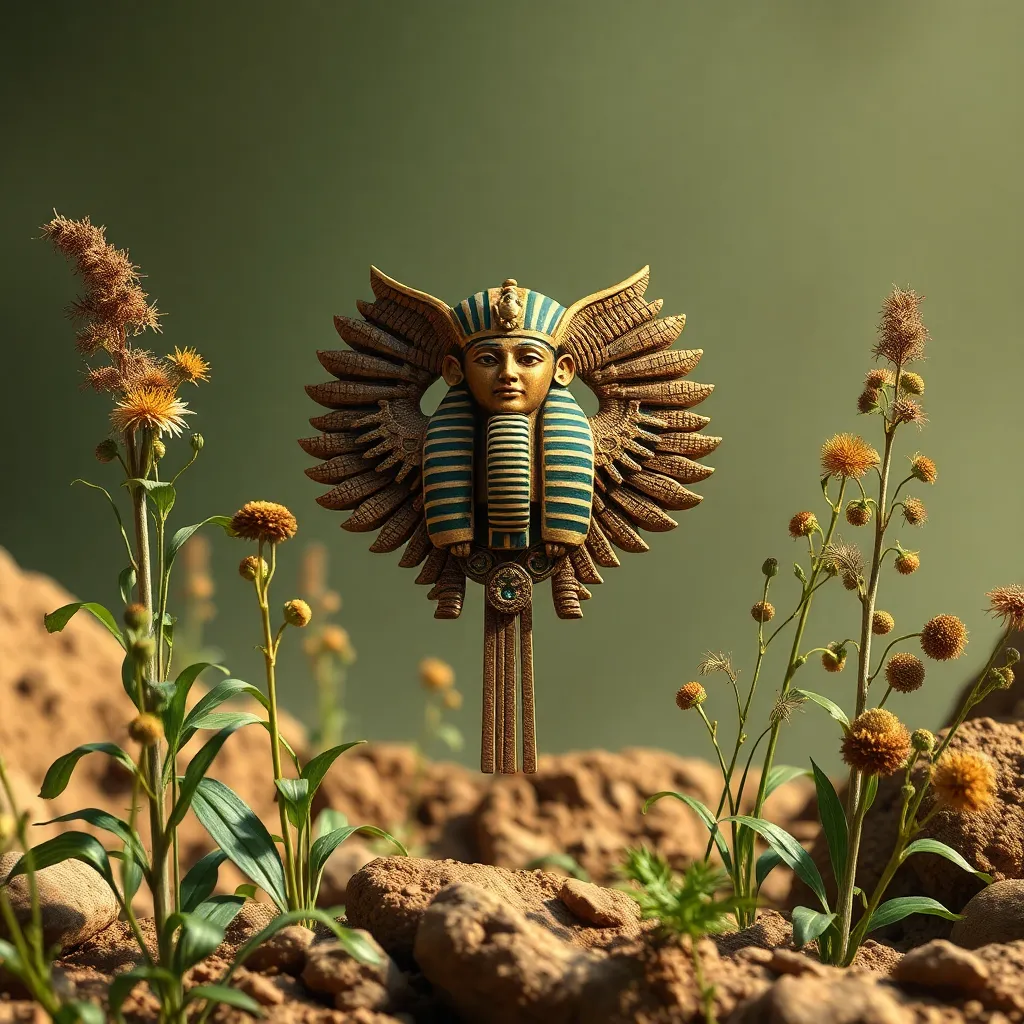The Role of Sacred Herbs in Egyptian Healing Practices
I. Introduction
Ancient Egyptian healing practices are renowned for their holistic approach, blending physical treatments with spiritual beliefs. Central to these practices were sacred herbs, which not only served medicinal purposes but also held deep spiritual significance. This article explores the vital role of sacred herbs in Egyptian medicine, their historical context, properties, and enduring legacy in modern herbal practices.
II. Historical Context of Egyptian Medicine
The civilization of ancient Egypt, flourishing along the Nile for thousands of years, was marked by remarkable advancements in many fields, including medicine. The medical practices of this era were heavily influenced by the intertwining of religion, culture, and the natural environment.
- Religion: The Egyptians believed that health was a divine gift, and illness was often viewed as a punishment from the gods.
- Culture: The rich tapestry of Egyptian mythology and symbolism influenced healing practices, incorporating rituals and prayers.
- Environment: The availability of various plants along the Nile contributed to the development of herbal medicine.
Key texts such as the Ebers Papyrus and the Edwin Smith Papyrus provide invaluable insights into the medical knowledge of ancient Egypt, detailing various herbs and their applications in healing.
III. Sacred Herbs: Definition and Significance
Sacred herbs in ancient Egypt were plants that were believed to possess not only healing properties but also spiritual significance. These herbs were often associated with specific deities and used in rituals to invoke divine protection and healing.
- Spiritual Connection: Many herbs were linked to gods like Thoth, the god of wisdom, and Isis, the goddess of healing.
- Rituals: Herbs played a crucial role in ceremonies intended to heal the sick, purify spaces, and honor the gods.
IV. Common Sacred Herbs Used in Healing
Several sacred herbs were prominent in ancient Egyptian healing practices, each with unique properties and uses:
- Myrrh: Known for its anti-inflammatory and antiseptic properties, myrrh was used in wound healing and as a preservative in mummification.
- Frankincense: Valued for its calming effects, frankincense was often used in incense and believed to promote spiritual connection and clarity.
- Lotus: The blue lotus was associated with rebirth and purity, often used in concoctions to treat various ailments and in rituals for spiritual enlightenment.
Historical records show that these herbs were commonly utilized in various medicines and treatments, reflecting the Egyptians’ sophisticated understanding of plant properties.
V. Preparation and Application of Herbs
The preparation of sacred herbs for healing involved traditional methods that maximized their effectiveness. These methods included:
- Oils: Herbs were often infused in oils to create potent healing balms.
- Poultices: Ground herbs mixed with water or honey were applied to the skin to treat wounds and skin conditions.
- Infusions: Herbal teas and decoctions were prepared for internal ailments.
These preparations were frequently integrated with other healing practices such as massage and acupuncture, creating a comprehensive approach to health and wellness.
VI. The Role of Priests and Healers in Herbology
In ancient Egypt, the status of priests as healers was significant. These individuals held extensive knowledge of herbal medicine, often serving as intermediaries between the divine and the patient.
- Training: Priests underwent rigorous training to understand the properties of various herbs and their applications in healing.
- Famous Healers: Historical figures like Imhotep, who was both a priest and a physician, contributed greatly to the field of medicine.
These healers played a pivotal role in the community, providing care while also performing sacred rituals to appease the gods and ensure health.
VII. Modern Perspectives on Ancient Egyptian Herbal Practices
Today, there is a renewed interest in the ancient healing practices of Egypt, particularly in the context of herbal medicine. Many contemporary herbalists look to the past for inspiration, recognizing the value of traditional knowledge.
- Influence: Ancient Egyptian herbal practices have influenced modern herbalism, with many of their techniques and herbs still in use.
- Revival: There is a growing movement towards reviving ancient practices, as more people seek natural and holistic health solutions.
- Scientific Validation: Research is increasingly validating the medicinal properties of many herbs used by the Egyptians, bridging the gap between ancient wisdom and modern science.
VIII. Conclusion
In summary, sacred herbs played a vital role in ancient Egyptian healing practices, serving both medicinal and spiritual purposes. The legacy of these practices continues to resonate in modern herbal medicine, encouraging further exploration and research in ethnobotany.
The significance of sacred herbs in Egyptian culture highlights the intricate relationship between nature, spirituality, and health, a connection that remains essential in today’s quest for holistic well-being.




